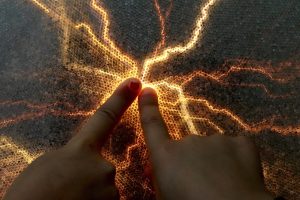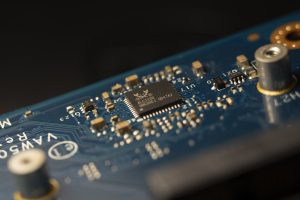Bio-Electronic Arrays: Living Processors
Bio-electronic arrays, also known as living processors, are a cutting-edge technology that combines the power of biology and electronics. They are advanced systems designed to mimic biological processes and perform computing tasks at the cellular level. These arrays have the potential to revolutionize the fields of computing, medicine, and even environmental monitoring. With the promise of enhanced speed, efficiency, and sustainability, bio-electronic arrays are poised to shape the future of technology. In this article, we will delve into the world of bio-electronic arrays, exploring their functioning, potential uses, and future implications.
The Science Behind Bio-Electronic Arrays
The concept of bio-electronic arrays is based on the idea of merging biology with electronics. It involves using biological cells, tissues, and organisms as the building blocks for electronic devices. These devices work by mimicking the natural processes of living organisms and using them to perform computing tasks. Bio-electronic arrays function by capturing and interpreting signals from living systems and translating them into electronic signals that can be processed and analyzed.
Design and Composition
The design and composition of bio-electronic arrays are crucial to their functioning. They consist of a combination of biological components such as cells, tissues, and microorganisms embedded in a conductive and biocompatible material. These components are then connected to electronic circuits, forming a hybrid system that can process signals from living systems.
Cell-Circuit Interface
The cell-circuit interface is the key component of bio-electronic arrays. It enables communication between the biological and electronic parts of the system. This interface is established using techniques such as nanotechnology, microfluidics, and surface engineering. It allows for the exchange of signals between the living cells and the electronic circuits, enabling the arrays to process information in real-time.
Potential Uses of Bio-Electronic Arrays
The potential uses of bio-electronic arrays are vast and diverse. These cutting-edge systems have the capability to transform multiple industries, including healthcare, environmental monitoring, and computing.
Medical Applications
Bio-electronic arrays have the potential to revolutionize medical diagnostics and treatments. They can be used to create biosensors capable of detecting diseases at an early stage, thus enabling timely interventions. These arrays could also be used in tissue engineering, as they can closely mimic the functionality of living tissues. Additionally, bio-electronic arrays could be utilized in drug development and drug delivery systems, allowing for more accurate and targeted treatments.
Environmental Monitoring
Bio-electronic arrays can also play a vital role in environmental monitoring. They can be used to detect and analyze pollutants in the environment. The arrays can sense changes in the levels of various chemicals, making them valuable tools for monitoring chemical spills, water contamination, and air pollution. This could aid in the timely detection of environmental hazards, allowing for prompt corrective actions.
Computing Applications
Bio-electronic arrays have the potential to transform the field of computing. They can be used to create highly efficient and sustainable computing devices. These arrays could also enable the development of bio-computers, which would function using biological processes instead of traditional silicon-based technology. This could lead to devices with higher processing power, lower energy consumption, and reduced electronic waste.
The Future of Bio-Electronic Arrays
The development of bio-electronic arrays is still in its early stages, and there is much potential for further advancements. As our understanding of living systems and nanotechnology continues to grow, we can expect to see more sophisticated bio-electronic arrays that can perform complex computing tasks. These arrays could also be integrated with other technologies, such as artificial intelligence and robotics, creating new possibilities and applications.
Challenges and Limitations
Despite their potential, bio-electronic arrays face several challenges and limitations. One major limitation is the high cost of developing and manufacturing these arrays. Additionally, there are ethical concerns surrounding the use of living organisms in technology. There is also the possibility of negative impacts on the environment if these arrays are not disposed of properly.
Conclusion
Bio-electronic arrays have the potential to revolutionize technology and transform various industries. With their ability to combine biology and electronics, these arrays have opened up new possibilities in medical diagnostics, environmental monitoring, and computing. As research in this field continues, we can expect to see more groundbreaking applications of these living processors in the near future. However, it is essential to address the challenges and ethical implications that come with this technology to ensure its safe and responsible use.







